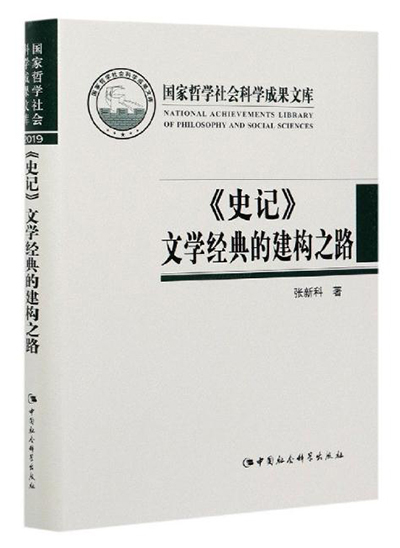Process of literary classicization of ‘Shiji’

The Construction Course of Literary Classic of Shiji
The Construction Course of Literary Classic of Shiji, written by Zhang Xinke, a professor from the School of Chinese Language and Literature at Shaanxi Normal University, reveals the different characteristics of literary acceptance of Shiji (Records of the Grand Historian) in different times against the broad historical and cultural background of more than 2,000 years, showing its course of literary classicization.
Originally, Shiji was not a literary classic. According to its author Sima Qian’s self-preface in the ending, the original intention of Sima Qian and his father to write Shiji was to follow Chunqiu (Spring and Autumn Annals), which, after being interpreted by the Gongyang School, was the most important governance classic among the Five Classics respected by Emperor Wu of the Han Dynasty (206 BCE–220).
How did Shiji go from a commentary on the Five Classics to a literary classic? The decline of Confucian classics at the end of the Eastern Han Dynasty (25–220), the establishment of literature as a concept in the Wei, Jin, Southern, and Northern Dynasties (220–589), and the interaction and separation between literature and historiography, are several important factors that contributed to the transformation of Shiji.
Under the historical condition of flourishing Confucian classics studies in the Han Dynasty, both literature and historiography were obscured by Confucian classics. It was not until the end of the Eastern Han Dynasty, when Confucian classics declined from its peak, that literature and historiography broke from the shackles of Confucian classics and became independent respectively. Impacted by Shiji’s biographical style, Qilu (Seven Records) by bibliographer Ruan Xiaoxu in the Liang period (502–557) set up “the record of biographies.” The bibliographic section of Suishu (Book of Sui) classified books into jing (classics), shi (history), zi (philosophy), and ji (literature), and Shiji was included in the “official history” of the shi part. Thus, Shiji moved from a commentary of Confucian classics to a famous historical work. On their way to independence, literature and history began to interact with each other. The literary value of Shiji thus became apparent.
Zhang argues that the literary status of Shiji was established in the Tang Dynasty (618–907). For example, Han Yu and Liu Zongyuan, masters of ancient-style prose in the Tang Dynasty, greatly admired Sima Qian’s articles. They drew successful experience from Shiji’s articles in creating their own ancient-style prose.
The classic construction of Shiji has lasted for more than 2,000 years. From the perspective of the composition of readers, there are politicians, philosophers, historians, writers, scholars, etc. of all eras. From the perspective of literary styles of the reviews of Shiji through the eras, there are poems, essays, scripts for story-telling, opera, fiction, academic works, notes, letters, prefaces, postscripts, etc.
Chen Tongsheng is a professor from the Faculty of Chinese Language and Culture at Guangdong University of Foreign Studies.
Edited by YANG LANLAN
